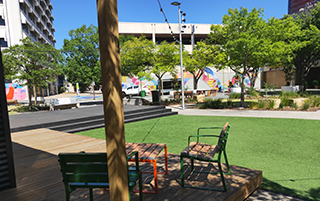 The Coronavirus pandemic has briefly pushed pause on our busy cities. Will things go back to the way they were before COVID-19? Not necessarily and maybe they shouldn’t.
The Coronavirus pandemic has briefly pushed pause on our busy cities. Will things go back to the way they were before COVID-19? Not necessarily and maybe they shouldn’t.
This might be the opportunity to step back and re-imagine what we want our cities, towns and neighbourhoods to look like in the next 20 years. The urban planning decisions we make today shape our societies. Economic fallout from the COVID-19 pandemic, climate change, population growth and changing demographics will impact on this busy hub in the south of Canberra.
As people have been forced to spend more time in their homes and neighbourhoods, their aspirations for their town may have changed. We asked a group of people who live, work and play in the Woden Valley what their wish list would be for the Woden of 2040?
The Council - Woden Valley Community Council President, Jenny Stewart
The Business Owner – Tom Adam from Canberra Martial Arts & Fitness
The Scientist – Jenny Edwards from Light House Architecture and Science
The Residents – a group of residents from all ages and stages
The Scientist – Jenny Edwards from Light House Architecture and Science
Jenny Edwards has a Masters degree in science and is an ACT licensed Building Energy Efficiency Assessor. Since 2011, Jenny has been a Director of the award-winning company Jigsaw Housing Pty Ltd, which has traded as Light House Architecture & Science since the end of 2015. In 2019, the ACT branch of the Institute of Architects awarded Jenny the Clem Cummings prize for “outstanding contribution to architecture and the built environment”. Jenny’s wish list for the Woden of 2040 is all about creating quality homes that suit our climate and are a joy to live in.
Focus on good design
 |
 |
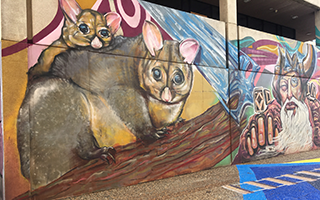 |
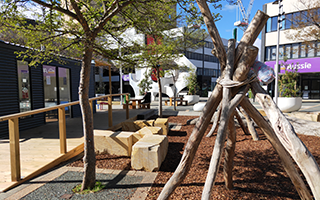 |
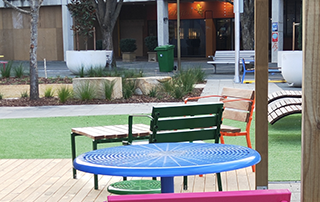 |
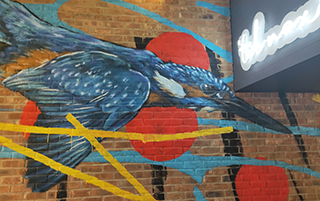 |
According to Jenny, the future of housing should be smaller, smarter and sustainable houses on small blocks. She believes that we can build incredible healthy, light-filled homes on a small block if people design for our climate and for the sunshine.
“Not only are these houses cheap and energy efficient to run; they have a positive impact on your physical and mental health,” says Jenny.
“We need more careful consideration of the design of new houses. Instead of building big apartment blocks, a lot of people still want semi-independence or separation so there is potential to do really good houses on small lots that may have communal gardens or communal spaces without being stacked on top of each other”.
Explore the untapped potential in larger blocks
Block layouts for new suburbs are already locked in 20 years out which means that they require thought many years earlier. Discussing urban infill, Jenny offers the following insights.
“When you look at the existing houses in Woden, many of the homes are on large blocks”.
She suggests that we should look at renovation and the potential to divide them into two homes. This can mean that a big family home that has turned into an ‘empty nest’, can be divided to suit an older couple and also offer the potential for a nice rental income.
“A lot of these residences have space for another residence in the backyard. It is possible to do this with current planning regulations,” explains Jenny.
“There is a lot of untapped potential in our larger blacks for sun-filled energy-efficient housing that’s good for people and the environment”.
Plan for ageing in place
Another item on Jenny’s wish list is planning for an ageing population.
“Ageing in place is critical and anyone designing a house at the moment should be taking this very seriously”.
“There are standards for accessibility, and while not all developers will go to the platinum level of accessibility, good universal design principles are achievable for most builds.
“Increasingly clients come to us, including younger families, that want to take into account the ability to age in place. This might be their forever home or they might have older family members live with them.”
She stresses that this is all quite possible with early, thoughtful design. Jenny says that there are many simple things you can do when it comes to ageing in place.
“When families are looking at a building a house, we ask them to think of the house as a family home now but plan for it to be able to separate into two residences down the track. This requires careful planning upfront”.
Careful planning upfront for access, carparking, private space and thinking where the house will separate; are important first steps.
“For multigenerational families, an aging parent might have their own entrance and be completely independent, but when necessary there is internal access”.
Jenny explains that in areas like bathrooms, putting in extra blocking or support timber in walls is important upfront. This provides reinforcing for handles in showers and bathrooms down the track. Other considerations such as showers without thresholds should be standard.
“None of this is rocket science, but it’s important to think of this before you start building. After you build its complicated and expensive, upfront it’s really quite simple.”
Landscape architecture is critical
Another item on Jenny’s wish list is the consideration of landscape architecture when designing homes.
“Landscape architecture is critical to designing homes. Tight spaces can be enhanced by clever uses of the sun and gardens”.
She explains that as people get busier and don’t have time for big gardens, big blocks with big gardens become less attractive.
“A lot of families are happy for community veggie gardens. We don’t need big gardens, but we do need consideration of landscape such as verge gardens and street trees for shade”.
Consideration of our landscape is very important. Jenny says easy access to good transport, great bike paths, great community spaces and open spaces and parks are critical for families.
A better educated consumer
Jenny says that when we look at how we can get affordable, energy efficient and well-designed houses; we need to start by educating the consumer.
Young consumers go to display villages in new suburbs and a lot of the project homes that they see aren’t tailored to our Canberra climate. They think this is what’s on offer and what they should be aspiring to.
Jenny says very few people get to experience good design and to feel and experience the alternative.
“They think that because a house meets a 6-star standard, it must be good.”
Jenny takes part every year in Sustainable House Day, Solar House Day and Design Canberra so that people can come and experience the alternative.
Jenny emphasises again that the timelines are very long and change is slow when it comes to development, but demand for smaller, smarter and sustainable houses is increasing.
Consider refurbishing older buildings
There are some great opportunities to refurbish some of the older existing buildings in Woden.
“The core structure of them is really good and clever design in commercial buildings is possible – it just takes willingness”.
Design for our climate
Another biggie on Jenny’s wish list is a focus on designing for our climate.
“Our approach has always been about soaking up the winter sunshine and then in summer you close up your well-insulated house during the day, open up in the cool evenings and cross ventilate, pushing the air through with ceiling fans”.
“But this year because of the bushfires we could not do that.
“This has triggered quite a shift in thinking across the country but particularly in Canberra.
“It means we now have to think about the air purification and ventilation in our homes more closely. We need to consider having systems because when there’s that much smoke outside we can’t rely on climatic systems and we will need some mechanical help”.
Jenny says that during the bushfires, the ventilation systems in Australia didn’t have enough filtration in them to cope with smoke.
“The ventilation and air purification industry are doing a lot of research at the moment. There are answers coming. These don’t have to be big centralised, expensive systems.
“The other things that go hand-in hand with this is making sure our houses are more airtight. Better air tightness and ventilation will be crucial for Australian houses. It is a big issue if we are going to be spending more time in our homes, then air quality is important”.
Jenny says this applies to viruses too.
“We can’t have shared systems. If you are in an apartment block you certainly don’t want your ventilation system to be shared with your neighbour. There are clever, cost effective ways to ventilate our homes, it just requires upfront design”.
If you are interested in seeing what some of Jenny’s ideas look like, you can see Jenny's award-winning renovation project here, located in Curtin.
Read more: The Residents – a group of residents from all ages and stages



